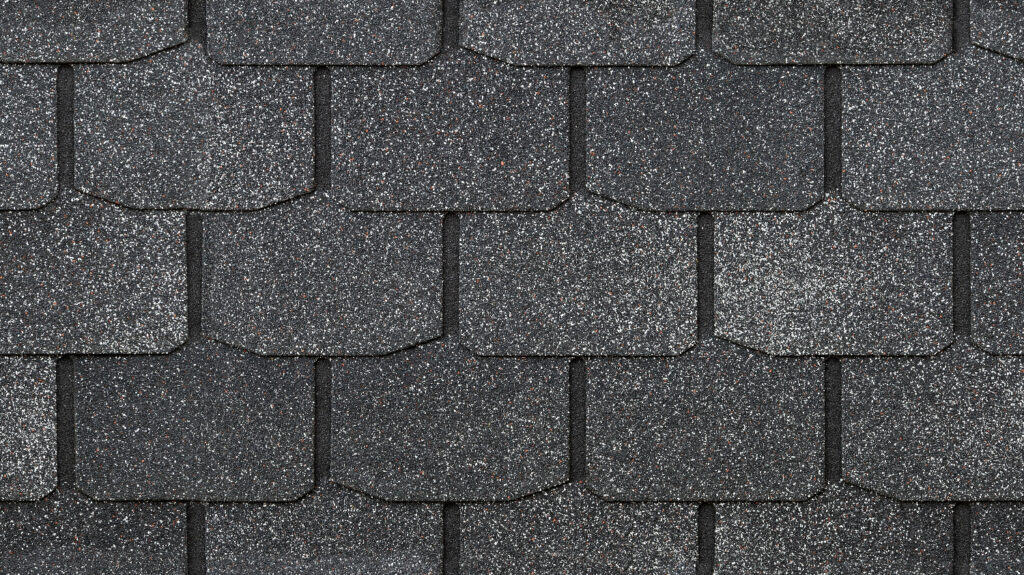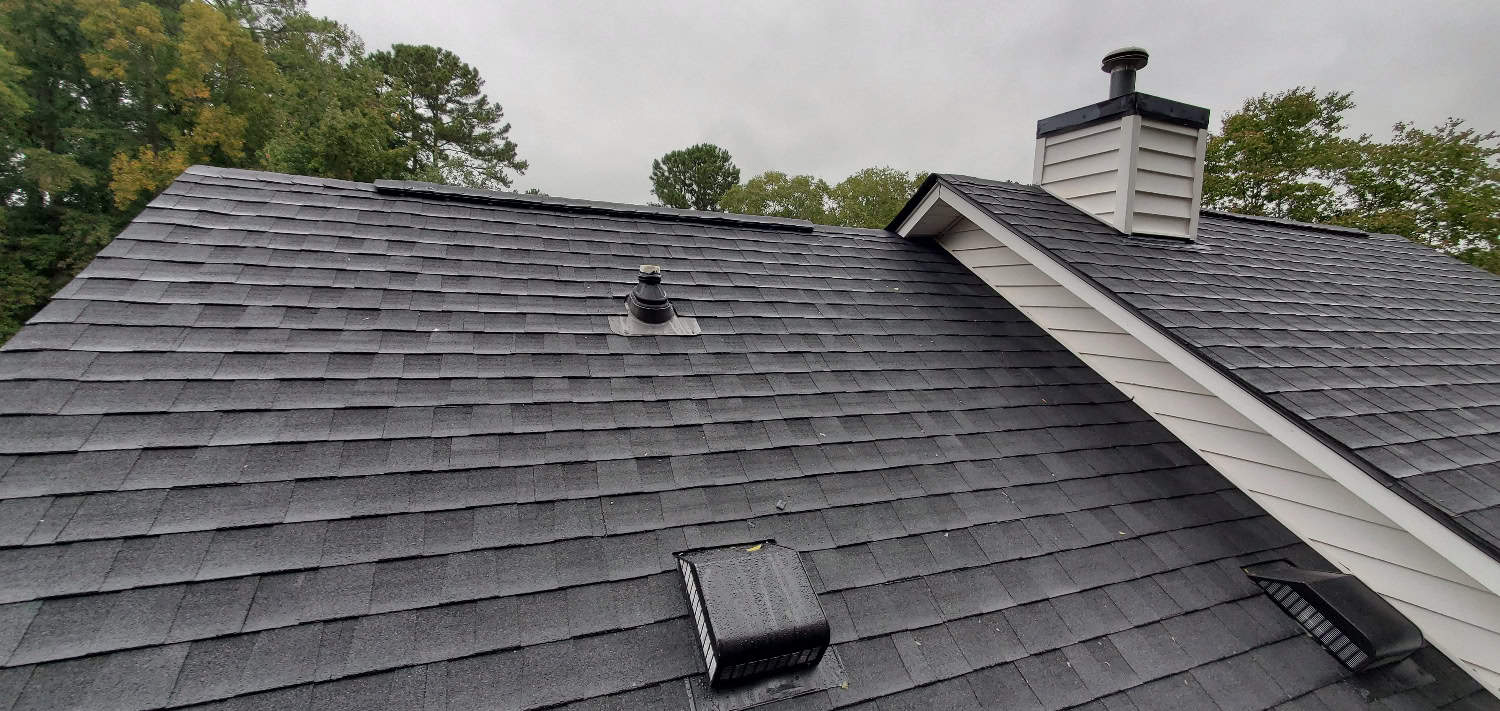Texas is known for its scorching summers, with temperatures often soaring above 100 degrees Fahrenheit. Homeowners must consider many factors when choosing roofing materials and colors, particularly in such a hot climate. One popular, yet problematic choice is a black roof. While black roofs can be aesthetically pleasing and trendy, they may not be the best option for homes in Texas.
Inside this blog:
- 6 Reasons to Avoid a Black Roof in Texas
- Alternatives to Black Roofs
- Benefits of Choosing a Reflective Roof in Texas
6 Reasons to Avoid a Black Roof in Texas
Roof color plays a significant role in a home’s energy efficiency and overall comfort. Here are some reasons to avoid black roof shingles:
1. Heat Absorption and Increased Cooling Costs
Black roofs absorb a substantial amount of heat from the sun. This is due to the color’s low albedo, which means it reflects very little sunlight and absorbs most of it. During the hot Texan summers, the surface temperature of a black roof can rise significantly, sometimes reaching up to 190 degrees Fahrenheit.
The heat absorbed by a black roof is transferred into the home, raising indoor temperatures. This makes air conditioning systems work harder to maintain a comfortable indoor environment, leading to higher energy consumption and increased utility bills.
2. Reduced Energy Efficiency
In Texas, where air conditioning is a necessity for much of the year, the increased heat load from a black roof can be substantial. Homes with black roofs require more energy to keep cool, resulting in higher electricity bills. Over time, these increased costs can add up, making black roofs a less economical choice.
Higher energy consumption not only affects your wallet, but also has environmental consequences. Increased use of air conditioning leads to higher greenhouse gas emissions from power plants, contributing to climate change. By choosing a more reflective roofing material, homeowners can reduce their carbon footprint and promote environmental sustainability.
3. Shortened Roof Lifespan
Roofing materials expand and contract with temperature changes. In Texas, the intense heat absorbed by a black roof can accelerate this process, leading to increased wear and tear. Over time, this thermal cycling can cause materials to degrade faster, reducing the overall lifespan of the roof.
Excessive heat can also cause certain roofing materials, such as asphalt shingles, to deteriorate more quickly. This can result in curling, cracking, and other forms of damage that compromise the roof’s integrity. A shorter lifespan means more frequent repairs or replacements, increasing long-term maintenance costs.
4. Increased Risk of Roof Damage
The extreme temperatures absorbed by black roofs can exacerbate structural issues. For example, the expansion and contraction of roofing materials can lead to gaps and openings, allowing water to penetrate the roof and cause leaks. In severe cases, prolonged exposure to high temperatures can weaken the structural components of the roof, leading to more significant damage.
The underlayment, a protective layer beneath the shingles, can also be affected by excessive heat. High temperatures can cause the underlayment to degrade, reducing its effectiveness at preventing water infiltration and increasing the risk of leaks and water damage.
5. Discomfort and Indoor Temperature Variations
The heat absorbed by a black roof can make attics unbearably hot, often exceeding 150 degrees Fahrenheit during the peak of summer. This heat can radiate down into living spaces, making it difficult to maintain a comfortable indoor temperature even with air conditioning.
Rooms directly beneath the roof may experience higher temperatures than those on lower floors, leading to uneven cooling throughout the home. This can create discomfort for occupants and place additional strain on cooling systems, further increasing energy consumption and costs.
6. Negative Impact on Home Value
Prospective homebuyers in Texas are often acutely aware of the challenges posed by the state’s climate. A black roof, with its associated heat absorption and energy efficiency issues, may be seen as a drawback. This can affect the perceived value of the home and make it less attractive to potential buyers.
The higher maintenance costs associated with black roofs can also be a deterrent for buyers. Knowing that the roof may require more frequent repairs or replacement can influence their decision, potentially leading to lower offers or prolonged time on the market.

Alternatives to Black Roofs
Now that you know why you should avoid black roofs, here are some alternatives:
Cool Roofing Materials
Cool roofing materials are designed to reflect more sunlight and absorb less heat. Options include light-colored asphalt shingles, metal roofs with reflective coatings, and specialized cool roofing materials. These alternatives can significantly reduce heat absorption, lowering cooling costs and improving energy efficiency.
Green Roofs
Green roofs, which incorporate vegetation, can provide excellent insulation and reduce heat absorption. While they may require a more expensive initial investment, they offer extensive benefits in terms of energy savings and environmental impact.
Solar Panels
Solar panels are specifically designed to collect energy from the sun. A solar roof is an excellent compromise for homeowners who want to produce energy for their homes.
Benefits of Choosing a Solar Roof in Texas
These are the benefits of switching to a solar roof:
Improved Energy Efficiency
Solar roofs can significantly reduce the amount of heat absorbed by the home, lowering indoor temperatures and reducing the need for air conditioning. This translates to lower energy bills and a reduced carbon footprint.
Enhanced Comfort
By maintaining more stable indoor temperatures, solar roofs improve overall comfort for occupants. This is particularly important in Texas, where summers can be extremely hot.
Extended Roof Lifespan
Solar roofing materials experience less thermal expansion and contraction, reducing wear and tear and extending the lifespan of the roof. This means fewer repairs and replacements over time, saving money and reducing hassle.
Increased Home Value
Homes with energy-efficient features are often more attractive to buyers. These features can enhance the perceived value of the home and make it more marketable.
Upgrade Your Roof
When it comes to selecting the right roof for your Texas home, it’s essential to consider the impact of roof color on energy efficiency, comfort, and long-term costs. Avoiding a black roof can help you maintain a cooler, more energy-efficient home and protect your investment.
If you’re considering a new roof, contact Clean Cut for a free quote. Our experienced team of roofing professionals will ensure that your roof provides maximum protection and efficiency.




